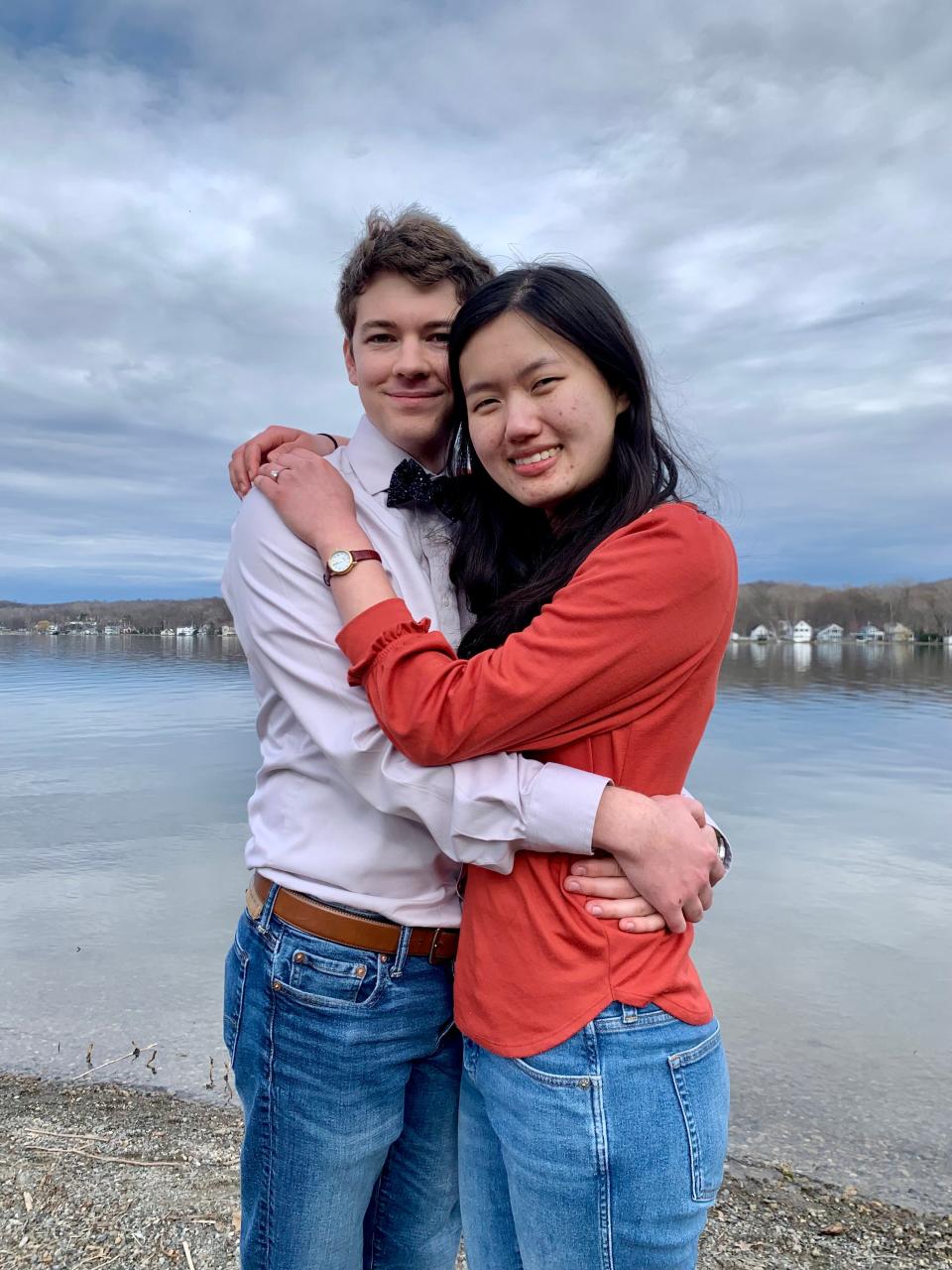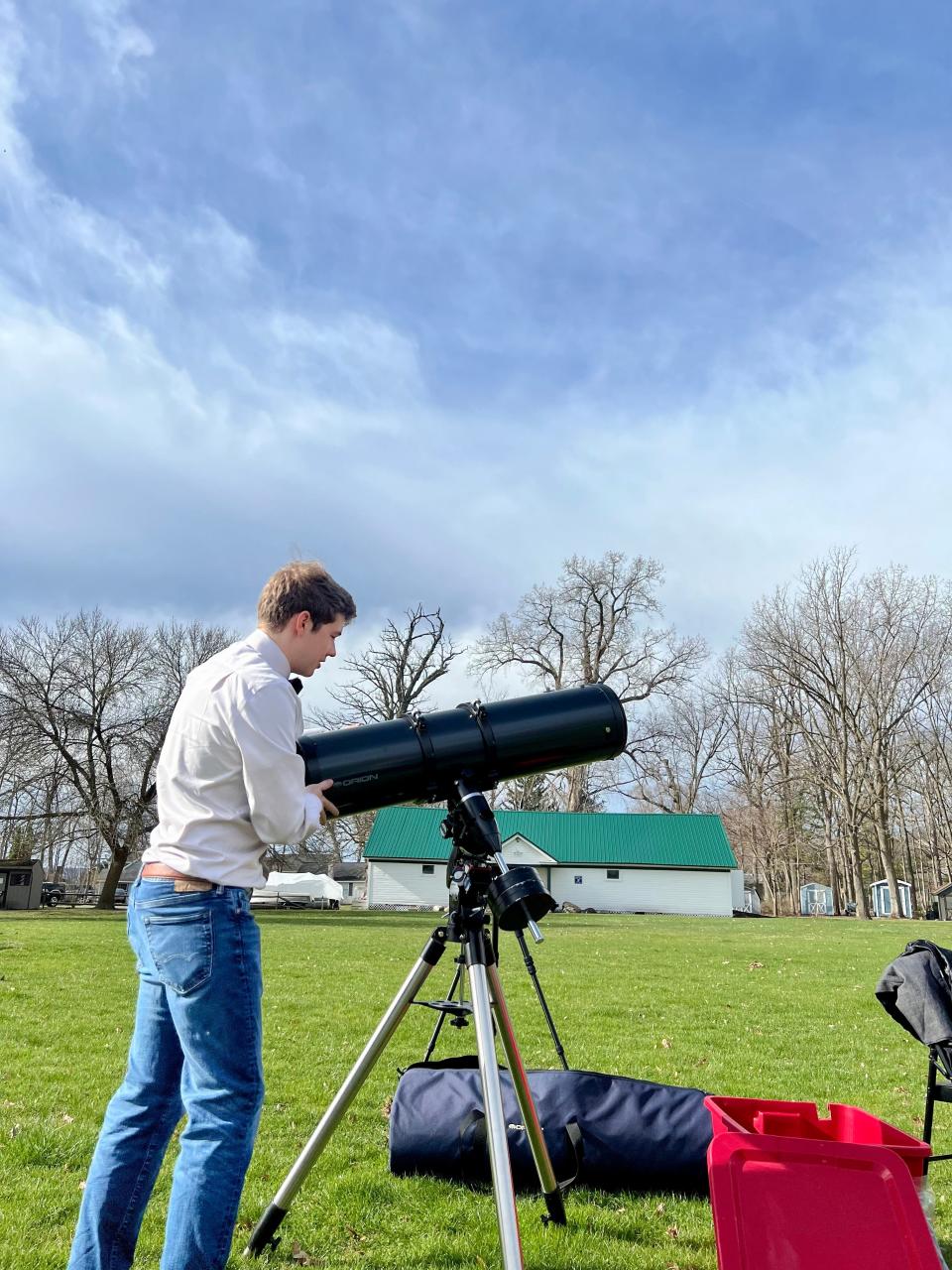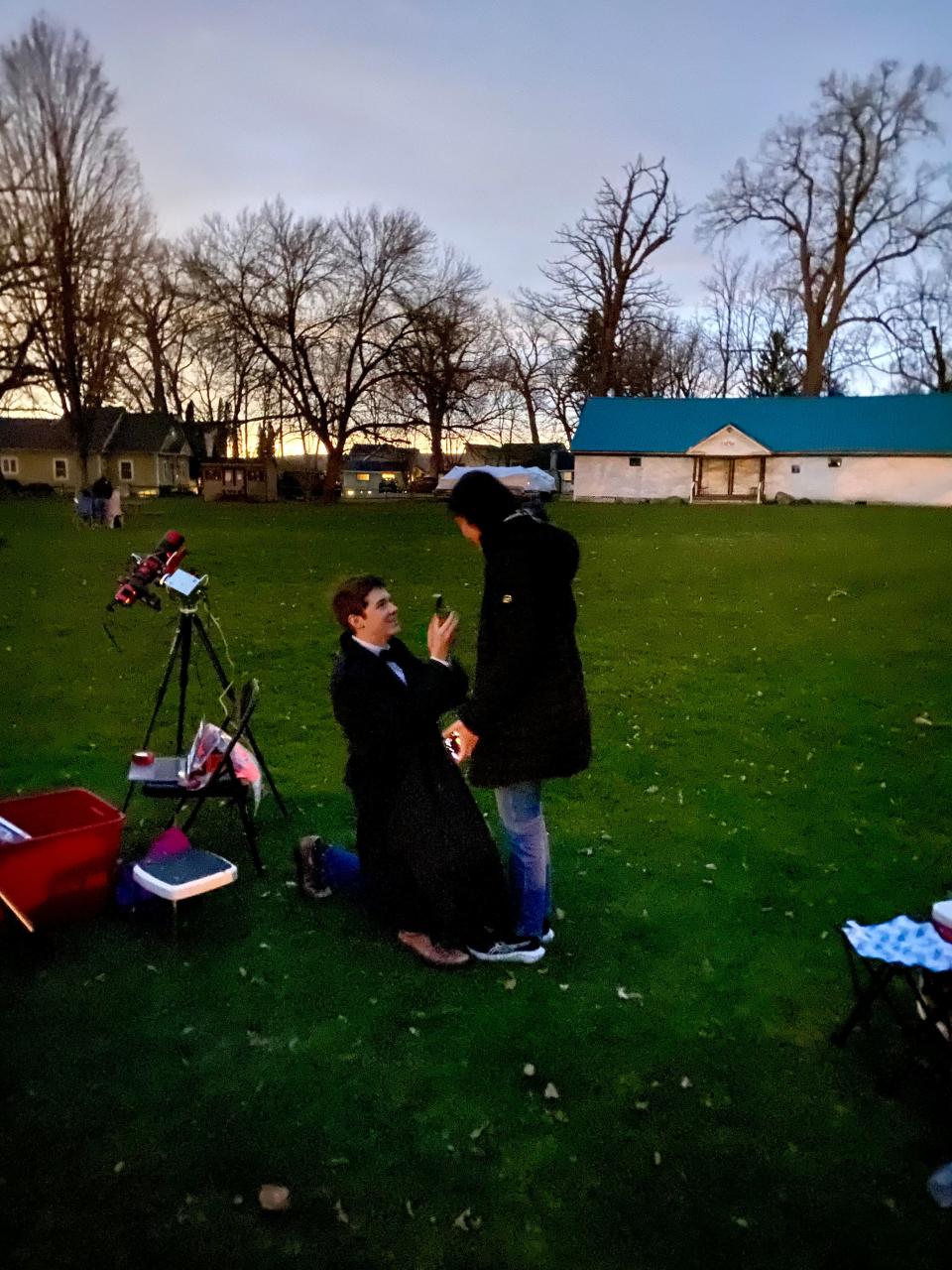Rochester eclipse marriage proposal turns out better than the view
Rochester's encounter with the solar eclipse may have been brief, but one visiting couple left the city with plans for a lifelong commitment.
Having witnessed two partial eclipses, Josef Zimmerman, a PhD student in physics at Princeton University, traveled to Rochester last month to see the full eclipse in the path of totality.
A student of the stars and the sciences, he was armed with high-tech equipment, an idea to replicate a 1919 experiment that confirmed one of Einstein's theories of relativity and other intentions grounded more in the heart: He planned to ask his girlfriend, Amy Wang, to marry him.
Only days before the eclipse, the couple celebrated their sixth year of dating. They met at the University of Virginia as undergrad students.

Wang also was looking forward to the eclipse; they were joined by her grandmother, and Zimmerman's parents and brother.
The equation was right for the proposal, Zimmerman decided.
"I thought this was a good time because we'd actually have people there to film it," he said. "She herself was actually getting excited about the eclipse. This was an event where it wasn't just me enjoying it."
Choosing Rochester for the eclipse
When it comes to eclipse viewing, Zimmerman was no ordinary visitor to Rochester.
He traveled with two prized possessions — his Orion telescope with a mount designed to compensate for the earth’s rotation and the smaller William Optics RedCat 51 telescope, complete with a computer inside the mount allowing automatic downloads of images.
He chose Rochester as a location partly because it was manageable travel for family and for him and Wang. And it was in the path of totality, where the moon fully blocks out the sun.

Zimmerman spent a year constructing the mount for the smaller telescope, solely for the eclipse. As well, he carried solar filters that made viewing through the telescope safe during the partial eclipse phase.
Knowing that there was not to be another total eclipse in the United States for 20 years, he figured this was a rare occasion when he could travel with the telescopes — one so high-tech and precise that "I can see textures and sunspots on the sun," he said.
Clouds roll in on the day
The morning of the eclipse, Wang noticed that her boyfriend seemed unusually nervous. She assumed that it was because of the eclipse — he'd been planning so long — and the cloud cover descending upon Rochester.
The family decided not to head to their designated Rochester spot for viewing, Highland Park, and instead drove south to Long Point Park in Geneseo, on the shoreline of Conesus Lake.
Zimmerman, like many, hoped to see the corona, the sun's outermost atmosphere. He wanted to get extraordinary photos with his automated camera, as well as revisiting the 1919 experiments into Einstein's then-nascent "theory of general relativity," as it is commonly known in science circles.
What astronomers realized in 1919 was that the eclipse provided a rare opportunity to test the theory. The aim: Measure the gravitational deflection of starlight during the solar eclipse, an experiment Einstein himself had posited would bolster the theory.
"During totality, (the 1919 astronomers) predicted that the sun's gravity would ever so slightly bend the light from distant stars, and because the sun is blocked, they would be able to photograph the faint stars and measure their positions precisely to test how much the light was bent," Zimmerman said.
He thought he could recreate the experiment with his telescopes and camera, and later see the same "very subtle differences in the position of the stars due to the gravitational deflection."
But Geneseo did not escape the cloud cover either.
An eclipse, a proposal

When all was said and done on April 8, Zimmerman was unable to get the quality of photos he'd hoped nor the opportunity for the scientific experimentation.
But that did not mean the eclipse wasn't pretty cool.
Compared to the two partial eclipses he'd seen, "this was still spectacular because of how much more noticeable it was," Zimmerman said in a telephone interview.
The sudden loss of sunlight surprised even him, Zimmerman said. "It got so extraordinarily dark."
While some of his plans may have shifted during those few minutes of darkness, there was something Zimmerman knew he could do, regardless of how much of the eclipse was visible: Ask Amy to marry him.
And he did.
The couple — both are 25 years old — had talked of marriage, but Wang thought his mind was largely on the eclipse. Instead, it was more so on her.
"I was definitely surprised" by the proposal, she said. And, she said, the presence of family to witness the moment made it even more special.
She said "yes."
Now the couple will become among the group known as "eclipse chasers." "We are planning for the 2026 eclipse either in Iceland or Spain," Wang said.
The eclipse photos from Geneseo may have been slightly blurry and the clouds a bit of an impediment, but that was all secondary to the proposal, Wang said.
"At the end of the day we always have this memory."
And more eclipses on the horizon.
Gary Craig is a veteran reporter with the Democrat and Chronicle, covering courts and crime and more. You can reach Craig at gcraig@rocheste.gannett.com. He is the author of two books, including "Seven Million: A Cop, a Priest, a Soldier for the IRA, and the Still-Unsolved Rochester Brink's Heist."
This article originally appeared on Rochester Democrat and Chronicle: Rochester eclipse marriage proposal turns out better than the view

